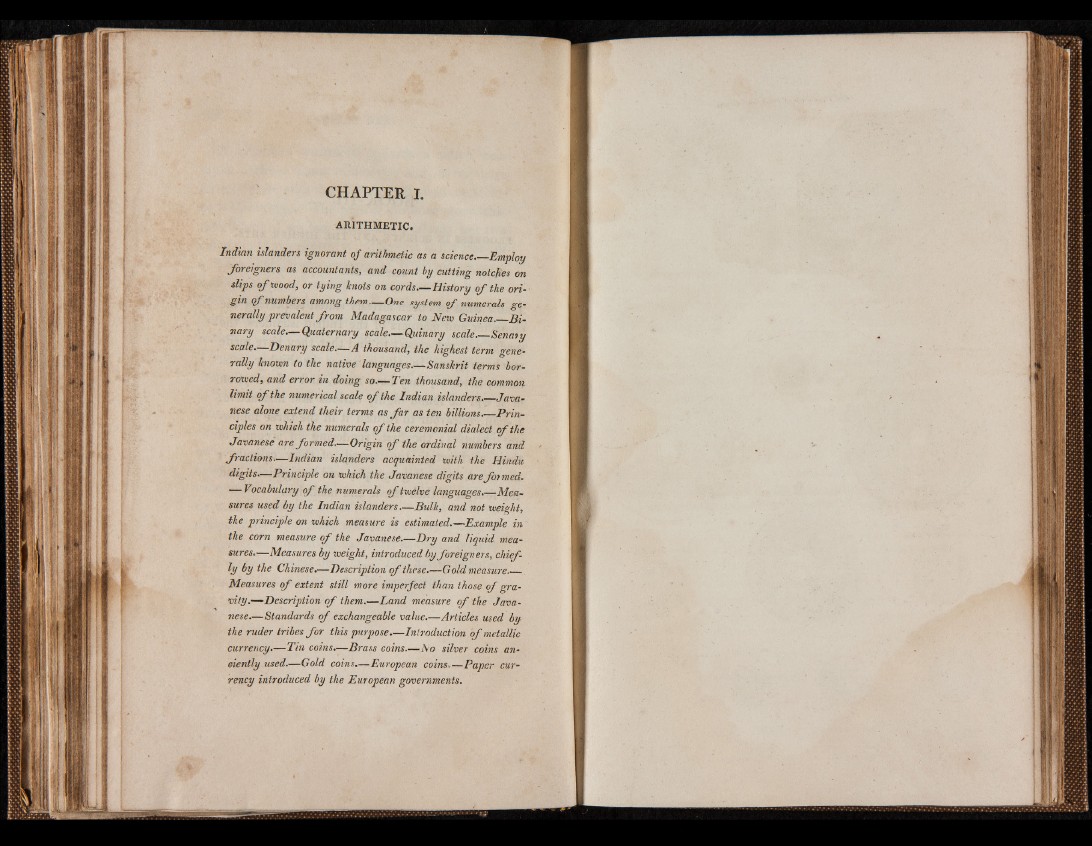
CHAPTER I.
ARITHMETIC.
Indian islanders ignorant o f arithmetic as a science Employ
foreigners as accountants, and count by cutting notches on
slips o f wood, or tying knots on cords— History o f the origin
o f numbers among them— One system o f numerals generally
prevalent from Madagascar to New G u in e a -B inary
scale— Quaternary scale— Quinary scale Senaty
scale.— Denary scale— A thousand, the highest term generally
known to the native languages Sanskrit terms borrowed,
and error in doing so.— Ten thousand, the common
limit o f the numerical scale o f the Indian islanders.—Javanese
alone extend their terms as fa r as ten billions.—Principles
on which the numerals o f the ceremonial dialect o f the
Javanese are formed.— Origin o f the ordinal numbers and
fractions— Indian islanders acquainted with the Hindu
digits.— Principle on which the Javanese digits are fo i med.
— Vocabulary o f the numerals o f twelve languages.—Measures
used by the Indian islanders.—Bulk, and not weight,
the principle on which measure is estimated.— Example in
the corn measure o f the Javanese.— Dry and liquid measures
Measures by weight, introduced by foreigners, chiefly
by the Chinese.— Description o f these Gold measure.
Measures o f extent still more imperfect than those o f gravity.—
Description o f them Land measure o f the Javanese.—
Standards o f exchangeable value.— Articles used by
the ruder tribes fo r this purpose— Introduction o f metallic
currency.— Tin coins.— Brass coins— No silver coins anciently
used.— Gold coins.— European coins.—Paper currency
introduced by the European governments.